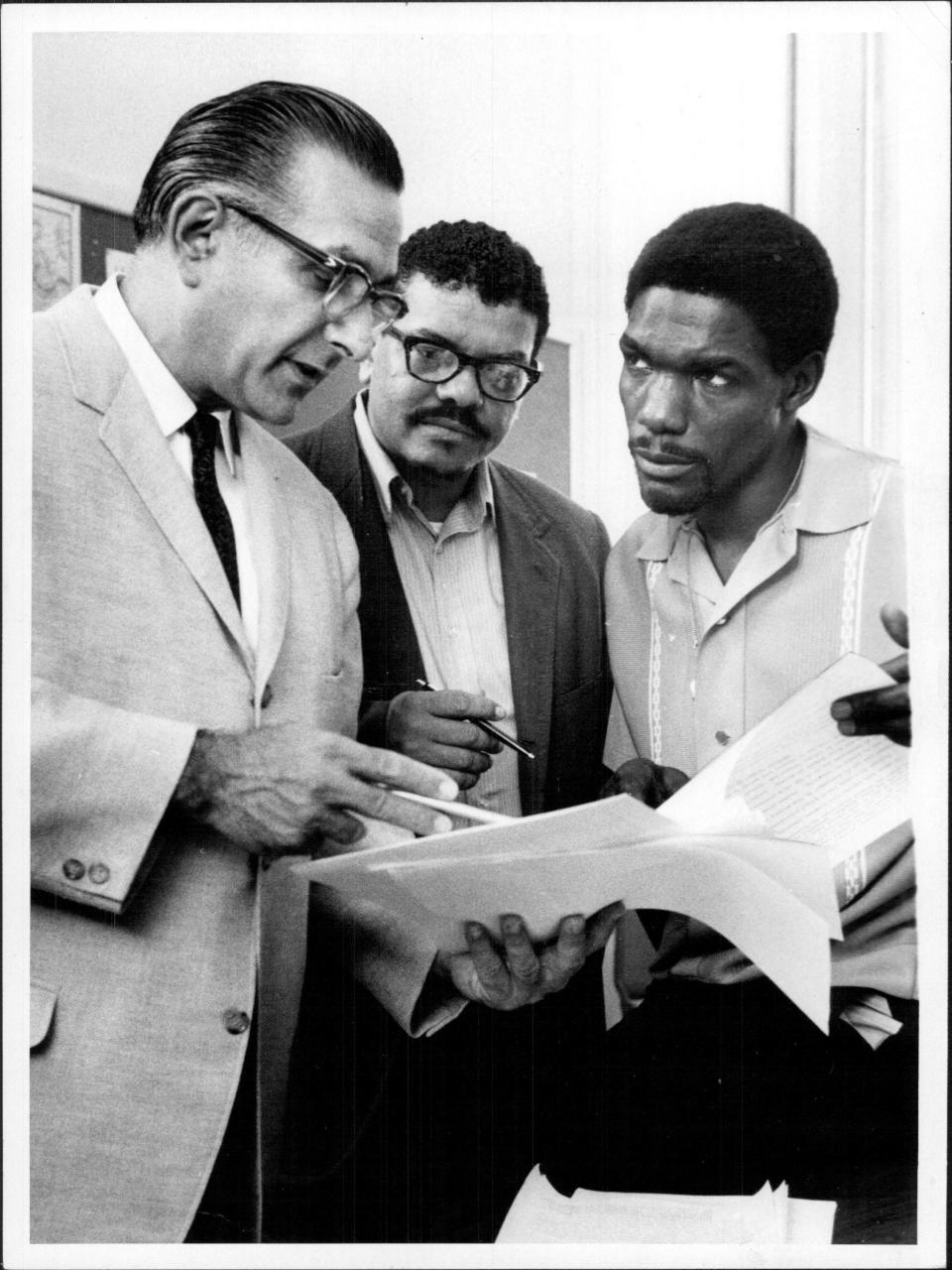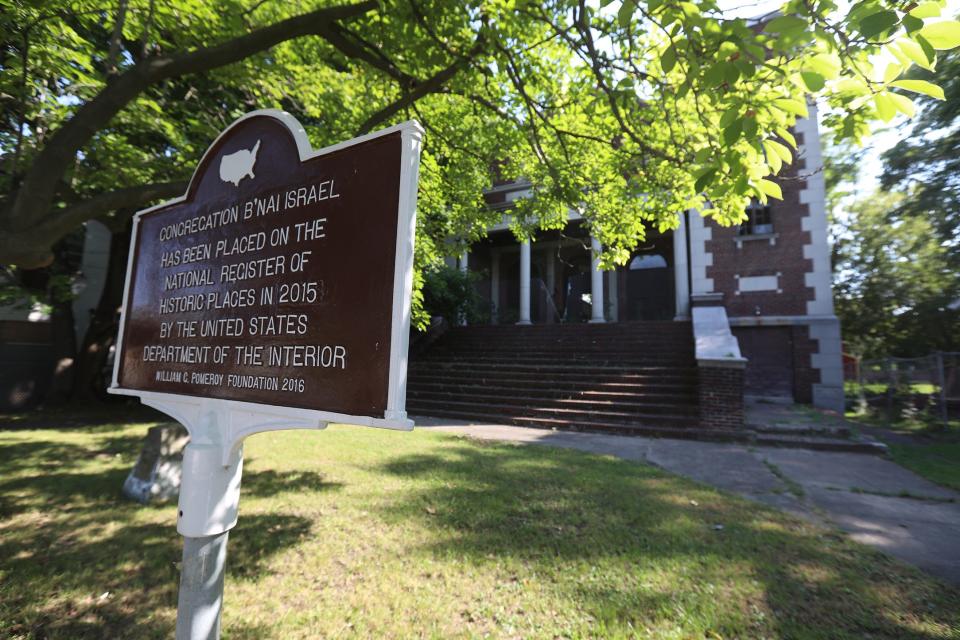'White supremacy affects both groups': Event aims to bridge the Black-Jewish divide
The participants in an event Thursday night called "Bridging the Black/Jewish Divide" will have a great deal of ground to cover.
Commiseration and divestment; civil rights solidarity and Louis Farrakhan; Kyrie Irving's recent controversial entanglement with Black Hebrew Israelites. All of it playing out along highly irregular fault lines of race, ethnicity, religion and class.
"Are Blacks and Jews having a dialogue, an interaction, a seminar, a dialectic, a competition, an argument, an estrangement, an annulment?" authors Jacques Berlinerblau and Terrence Johnson ask in their book, "Blacks and Jews in America."
"They have done all of those things. And because the communities are diverse and filled with exceedingly opinionated people, all of those things have often happened simultaneously."
Berlinerblau and Johnson are in Rochester for the event, sponsored by the Jewish Federation of Greater Rochester's Levine Center to End Hate. It will be moderated by the Monroe County Bar Association's president, Langston McFadden, and its past president, Jill Paperno. It is at 7 p.m. Thursday at Nazareth College's Shults Community Center.
"There's a troubling lack of common understanding within these groups of the things we collectively and individually have overcome," McFadden said. "And when you don’t have that understanding, it leads to some of the division we see between the two groups."
'Go Down, Moses'
The mutual recognition between Black and Jewish people in America begins, in one sense, in the Book of Exodus, a foundational text for Judaism and spiritual succor for those living in slavery in the United States before 1865. Harriet Tubman was called "the Moses of her people," and stories of the Israelites in slavery in Egypt were vital source material for early Black spirituals.
After emancipation, Black and Jewish people jointly helped found the National Association for the Advancement of Colored People in 1909; the organization was seen in part as a bulwark against anti-Semitism as well as racism. Their common cause was apparent in Northern cities' poor quarters in the early 20th century, as poor European Jewish immigrants and Black Southern migrants found themselves shunted into the same undesirable neighborhoods.

Over time, though, those Jewish immigrants partially assimilated and were granted status as "white." They amassed property and moved to the suburbs if they chose; in some cases they were landlords or shopkeepers in Black neighborhoods, a regular occasion for friction, even as liberal Jews were often among the foremost white advocates for Civil Rights during the 1960s.
"The most ironical thing about Negro anti-Semitism is that the Negro is really condemning the Jew for having become an American white man — for having become, in effect, a Christian," James Baldwin wrote in a famous essay on anti-Semitism among Black people.
Exploring how divestment impacts neighborhoods in Rochester
In Rochester that dynamic played out most vividly on Joseph Avenue, where by the 1960s the Black population had surged. Many Jewish-owned businesses were destroyed during the 1964 uprising, and an NAACP post-mortem concluded: "Merchants were accused of taking more than two million dollars out of the Negro community each year and into the suburbs. The fact that merchants did not return any of this money into the community ... was resented."
Today, the Joseph Avenue Arts and Cultural Alliance has raised $2.8 million to restore the 95-year-old Congregation B’nai Israel synagogue as a "cultural hub" in a neighborhood that's now nearly entirely Black and Latino.
From 2018:Organizers await word on funding to transform historic synagogue into theater

The Alliance's board president, Neil Scheier, pointed out that many of the Jewish congregations in Monroe County have their roots in northeast Rochester, but said he didn't think of the project as reparative in nature.
In a 2020 essay, Rochester's only Jewish elected official, Mitch Gruber, called on the local Jewish community to "understand and acknowledge how our divestment and privilege helped create the issues of today" and to find ways to reinvest in the neighborhood.
"We could do the work required to make sure that the young Black kid growing up on Joseph Avenue has the same opportunities as the young Jewish kid growing up in suburbia," he wrote.
Understanding the shared vulnerability to bigotry, hate and bias
Recent history has demonstrated that Black people and Jews in the United States remain vulnerable to the same forces of bigotry.
"Jews are white until they’re not," Elam of the Levine Center said. "I assure you the Goyim Defense League that’s dropping flyers in (Irondequoit) doesn’t see me as white."
She said information about anti-Semitism should be included more regularly in diversity, equity and inclusion initiatives; she also emphasized the need to examine the intersection of Judaism and whiteness as it applies to the mostly Eastern European-descended Jews in the Rochester area.
Beyond Thursday's event, the Levine Center intends to bring to Rochester a Cleveland-based initiative called the Rekindle Fellowship that intends to strengthen Black-Jewish relationships.
"Members of these two groups sometimes accuse each other of not understanding each other’s histories of bias and hate," Elam said. "But these programs are all in response to the uptick in hate we've seen over the last few years. ... We're seeing white supremacy affecting both groups, really."
Contact staff writer Justin Murphy at jmurphy7@gannett.com.
This article originally appeared on Rochester Democrat and Chronicle: Rochester event aims to bridge the Black-Jewish divide

